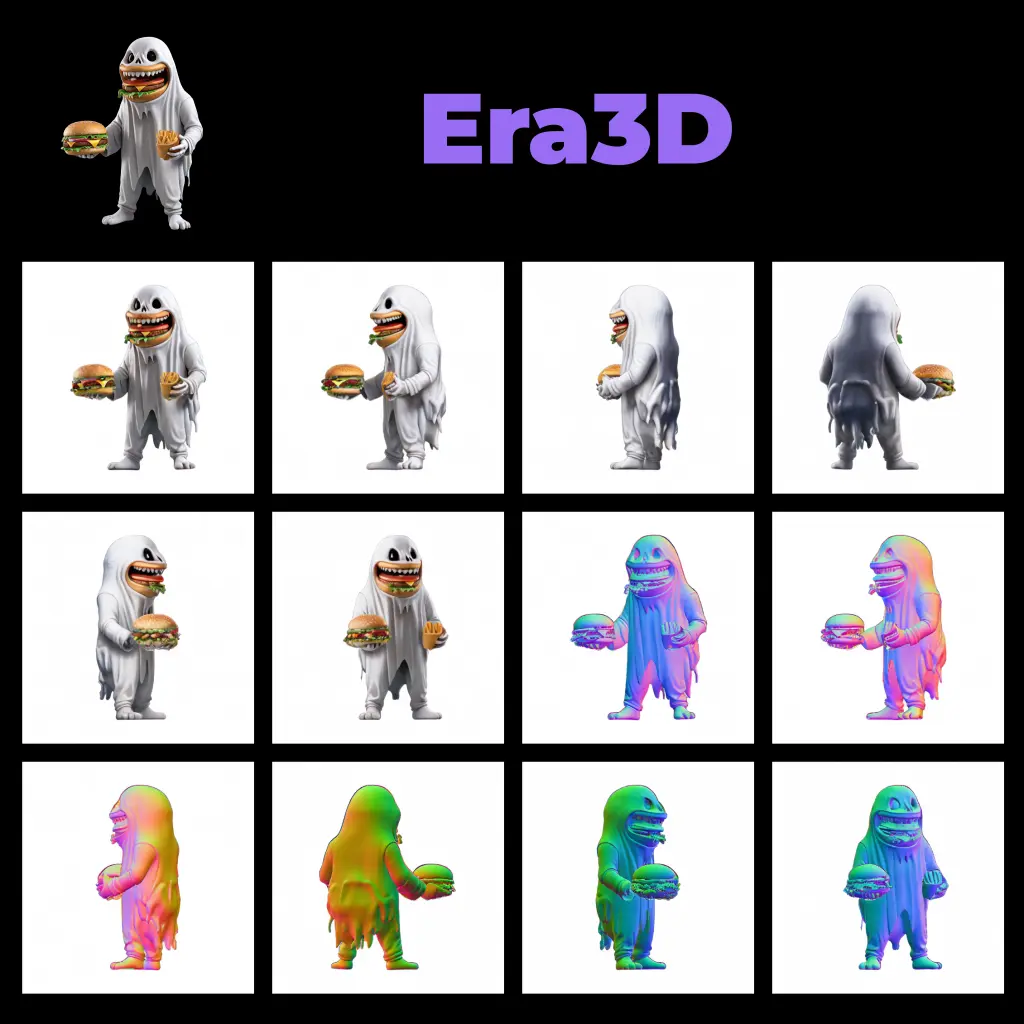ComfyUI Node: CivitAI metadata setup
LF_CivitAIMetadataSetup
Category✨ LF Nodes/Configuration
lucafoscili (Account age: 2319days) Extension
LF Nodes Latest Updated
2025-02-21 Github Stars
0.05K
How to Install LF Nodes
Install this extension via the ComfyUI Manager by searching for LF Nodes- 1. Click the Manager button in the main menu
- 2. Select Custom Nodes Manager button
- 3. Enter LF Nodes in the search bar
Visit ComfyUI Online for ready-to-use ComfyUI environment
- Free trial available
- 16GB VRAM to 80GB VRAM GPU machines
- 400+ preloaded models/nodes
- Freedom to upload custom models/nodes
- 200+ ready-to-run workflows
- 100% private workspace with up to 200GB storage
- Dedicated Support
CivitAI metadata setup Description
Automates embedding metadata for CivitAI compatibility, streamlining image creation process with comprehensive details for reproducibility and traceability.
CivitAI metadata setup:
The LF_CivitAIMetadataSetup node is designed to streamline the process of embedding metadata into images for compatibility with CivitAI. This node automates the generation of a comprehensive metadata string that includes various parameters such as prompts, embeddings, LoRA tags, and other relevant settings used during the image creation process. By consolidating this information, the node ensures that all necessary details are preserved and can be easily referenced or shared, enhancing the reproducibility and traceability of AI-generated artwork. This is particularly beneficial for artists who need to maintain detailed records of their creative process or share their work with others in a standardized format.
CivitAI metadata setup Input Parameters:
get_civitai_info
This parameter is a function or method that retrieves information from CivitAI. It is essential for gathering the necessary data to populate the metadata string. The function should be capable of fetching details such as model information, embeddings, and other relevant metadata.
node_id
The unique identifier for the node instance. This ID is used to track and reference the specific node within the workflow, ensuring that the correct metadata is associated with the right node.
checkpoint
The checkpoint parameter refers to the specific model checkpoint used during the image generation process. This includes details about the model's state and configuration at a particular point in time, which is crucial for reproducing the same results in future runs.
randomize
A boolean parameter that determines whether certain aspects of the metadata should be randomized. This can be useful for introducing variability in the generated metadata, which might be necessary for specific artistic or experimental purposes.
seed
The seed value used for random number generation during the image creation process. This value is critical for ensuring reproducibility, as it allows the same random processes to be repeated exactly.
filter
A parameter that specifies any filters applied during the metadata generation process. Filters can be used to include or exclude certain types of information, tailoring the metadata to specific needs or preferences.
CivitAI metadata setup Output Parameters:
metadata_string
A comprehensive string that consolidates all the metadata related to the image creation process. This includes prompts, embeddings, LoRA tags, model and VAE details, and other relevant settings. The metadata string is formatted for compatibility with CivitAI, ensuring that all necessary information is preserved and easily accessible.
checkpoint
The checkpoint used during the image generation process, returned as part of the output to confirm the specific model state and configuration.
vae
The VAE (Variational Autoencoder) details used in the image creation process. This includes information about the VAE model and its configuration.
sampler
The sampling method used during the image generation process. This parameter is important for understanding the technique applied to generate the image.
scheduler
The scheduling method used in the image creation process. This parameter provides insight into the timing and sequence of operations during image generation.
embeddings
The embeddings used in the image creation process. These are vectors that represent various features or attributes of the image, contributing to its final appearance.
lora_tags
Tags related to LoRA (Low-Rank Adaptation) used in the image creation process. These tags provide additional context and information about the specific adaptations applied.
output_prompt
The final prompt used in the image creation process, including any embeddings if applicable. This prompt is a key component of the metadata, capturing the initial input that guided the image generation.
negative_prompt
The negative prompt used to guide the image generation process by specifying what should be avoided. This parameter helps refine the output by providing additional constraints.
steps
The number of steps taken during the image generation process. This parameter is important for understanding the complexity and duration of the process.
denoising
The denoising strength applied during the image creation process. This parameter affects the clarity and quality of the final image.
clip_skip
The number of layers skipped in the CLIP model during the image generation process. This parameter can influence the style and content of the generated image.
cfg
The CFG (Classifier-Free Guidance) scale used during the image creation process. This parameter controls the balance between following the prompt and maintaining image quality.
seed
The seed value used for random number generation, returned as part of the output to ensure reproducibility.
width
The width of the generated image. This parameter is important for understanding the dimensions and aspect ratio of the final output.
height
The height of the generated image. This parameter, along with the width, defines the size of the final image.
hires_upscaler
The upscaler used for high-resolution image generation. This parameter provides information about the technique applied to enhance the image resolution.
hires_upscale
The scale factor used for high-resolution upscaling. This parameter indicates how much the image was enlarged during the upscaling process.
CivitAI metadata setup Usage Tips:
- Ensure that the
get_civitai_infofunction is correctly implemented to fetch all necessary metadata details. - Use a consistent
seedvalue to achieve reproducible results in your image generation process. - Adjust the
randomizeparameter based on whether you want variability in your metadata or consistent outputs. - Utilize the
filterparameter to tailor the metadata to your specific needs, including or excluding certain types of information as required.
CivitAI metadata setup Common Errors and Solutions:
"Unsupported image format for <file_name>"
- Explanation: This error occurs when the image format is not supported by the metadata extraction process.
- Solution: Ensure that the image is in a supported format, such as JPEG or PNG.
"Error fetching CivitAI information"
- Explanation: This error indicates a problem with the
get_civitai_infofunction, which is unable to retrieve the necessary metadata. - Solution: Verify that the
get_civitai_infofunction is correctly implemented and can access the required data from CivitAI.
"Invalid node ID"
- Explanation: This error occurs when the
node_idparameter is not correctly specified or is missing. - Solution: Ensure that the
node_idis correctly assigned and unique within the workflow.
"Randomization failed"
- Explanation: This error indicates an issue with the
randomizeparameter, where the randomization process could not be completed. - Solution: Check the implementation of the randomization logic and ensure that it is functioning correctly.
"Metadata string generation error"
- Explanation: This error occurs when there is a problem generating the metadata string.
- Solution: Verify that all input parameters are correctly specified and that the metadata generation logic is correctly implemented.
CivitAI metadata setup Related Nodes
RunComfy is the premier ComfyUI platform, offering ComfyUI online environment and services, along with ComfyUI workflows featuring stunning visuals. RunComfy also provides AI Playground, enabling artists to harness the latest AI tools to create incredible art.





